Find the magtiude and direction of a force vector acting on a unit length of a thin wire, carrying a current I=8.0A, at a point O. If the wire is hent as shown in (a) Fig with curvature radius R=10cm
(b ) Fig the distance between the long parallel segments of the wire being equal to l=20cm.

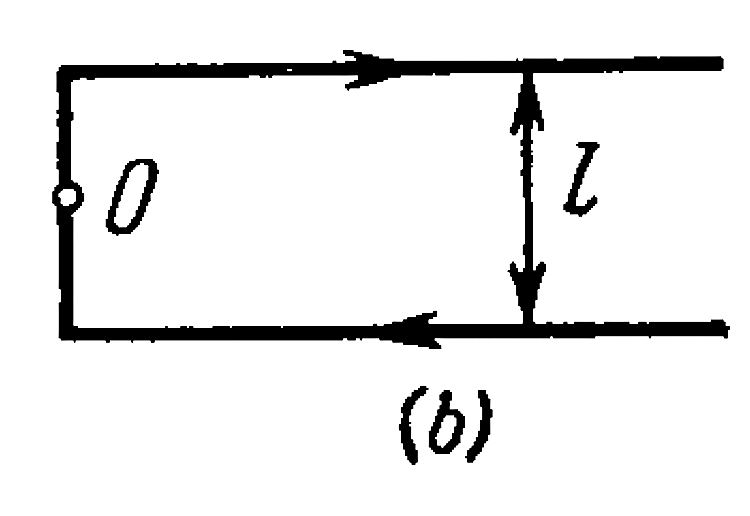
(a) The magnetic field at O is only due to the curved path, as for the line element, d→l↑⏐⏐↑⏐⏐→r.
Hence, →B=μ0i4πRπ(−→k)=μ0i4R(−→k)
Thus, −→Fm=iB(−→j)=μ0i24R(−→j)
So, Fu=π0i24R=0.20N/m
(b) In this part, magnetic induction →B at O will be effective only due to the two semiinfnite segments of wire. Hence
→B=2.μ0i4π(l2)sinπ2(−→k)
=μ0iπi(−→k)
Thus force per unit length,
−→Fu=μ0l2πl(−→i)

Topper's Solved these Questions
- ELECTRODYNAMICSBook:IE IRODOV, LA SENA & SS KROTOVChapter:ELECTRODYNAMICSExercise:Electromagnetic Induction
Explore 84 Videos
- ELECTRODYNAMICSBook:IE IRODOV, LA SENA & SS KROTOVChapter:ELECTRODYNAMICSExercise:Motion Of Charged Particle In Magnetic Field
Explore 36 Videos
- ELECTRODYNAMICSBook:IE IRODOV, LA SENA & SS KROTOVChapter:ELECTRODYNAMICSExercise:Electric Current
Explore 72 Videos
- ELECTRICITY AND MAGNETISMBook:IE IRODOV, LA SENA & SS KROTOVChapter:ELECTRICITY AND MAGNETISMExercise:All Questions
Explore 6 Videos
- ELECTROMAGNETISMBook:IE IRODOV, LA SENA & SS KROTOVChapter:ELECTROMAGNETISMExercise:All Questions
Explore 24 Videos
Similar Questions
Find the magnetic induction at the point O if the wire carrying a current I=8.0A has the shwon in Fig.
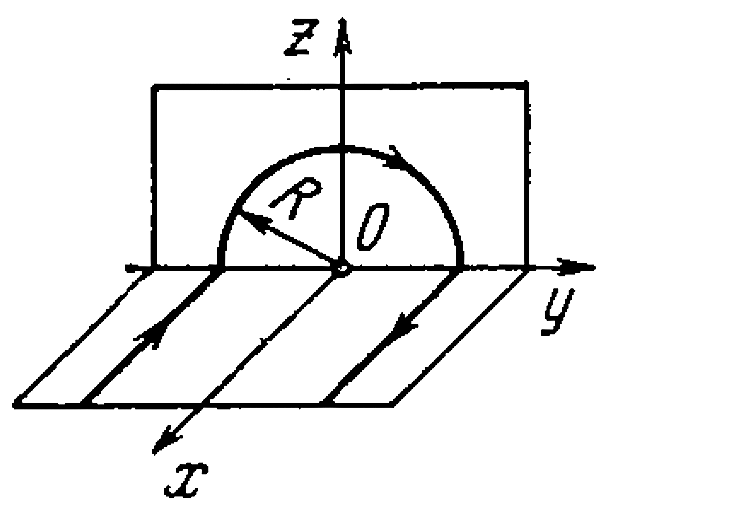


The radius of the curved part of the wire is R=100mm, the linear parts of the wire are very long.
View SolutionFind the magnetic induction at the point O of the following figures if the wire carrying a current I = 15A has the shapes shown here. The radius of the curved part R=5cm, the linear parts of the wire are very long.
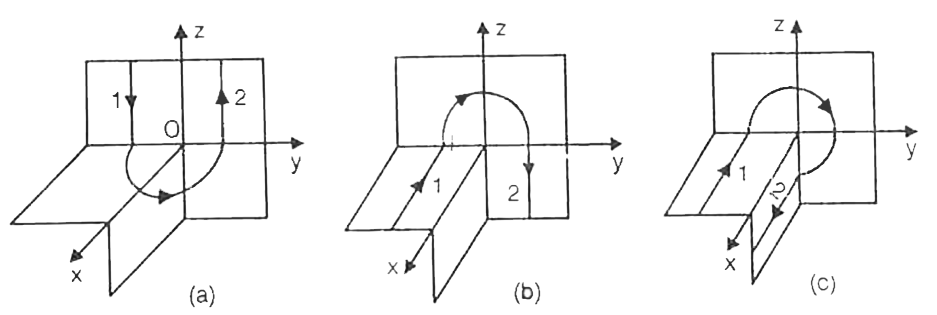
View Solution
Knowledge Check
Force per unit length acting at one end of each of the two long parallel wires, carrying current I each, kept distance r apart is
Aμ04πi2rBμ04π2i2rCμ04π(2i)2rDμ04πi24rA square loop of side a is placed at a distance a length away from a long wire carrying a current I1 . If the loop carries a current I2 as shown in the figure . Then the nature of the nature of the force and its amount is
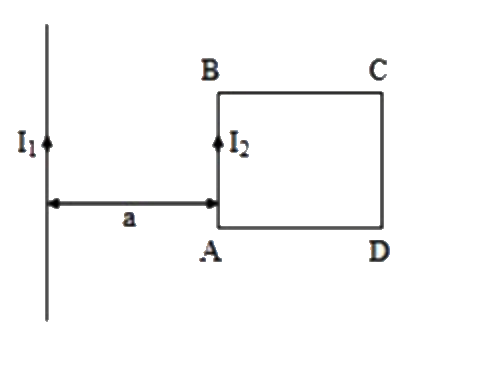 Aμ0I1I22πa, attractiveBμ0I1I24π, attractiveCμ0I1I24π, repulsiveDμ0I1I24πa, repulsive
Aμ0I1I22πa, attractiveBμ0I1I24π, attractiveCμ0I1I24π, repulsiveDμ0I1I24πa, repulsiveA straight wire carrying current is parallel to the y-axis as shown in Fig. The
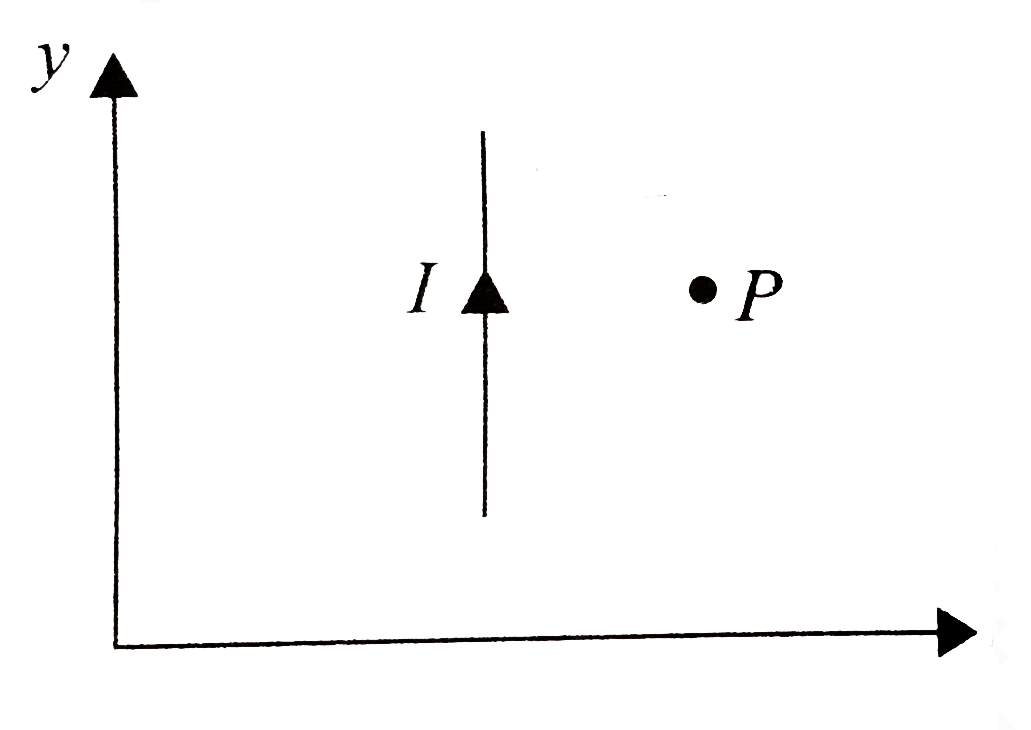 Amagnetic field at the point P is parallel to the x-axis.Bmagnetic field at P is along z-axisCmagnetic field are concentric circle with the wire passing through their common centreDmagnetic fields to the left and right of the wire and oppositely directed.
Amagnetic field at the point P is parallel to the x-axis.Bmagnetic field at P is along z-axisCmagnetic field are concentric circle with the wire passing through their common centreDmagnetic fields to the left and right of the wire and oppositely directed.
Calculate the force per unit length on a long straight wire carrying current of 4 A due to a parallel wire carrying 6 A current . Distance between the wires is 3 cm.
View SolutionA straight wire carrying a current of 5 A is bent into a semicircular arc of radius 2 cm as shown in the fig. Find the magnitude and direction of the magnetic field at the centre of the arc.

View SolutionCalculate magnetic induction at point O if the wire carrying
a current I has the shape shown in Fig.

(The radius of the curved part of the wire is equal to R and linear parts of the wire are very long.)
View SolutionA straight , long wire carries a current a current of 20A. Another wire carrying equal current is placed parallel to it. If the force acting on a length of 10cm of the second wire is (2.0×(10−5))N, what is the separation between them?
View SolutionThe force acting per unit length on one conductor due to the other for two long parallel current - carrying wires is
View Solution
